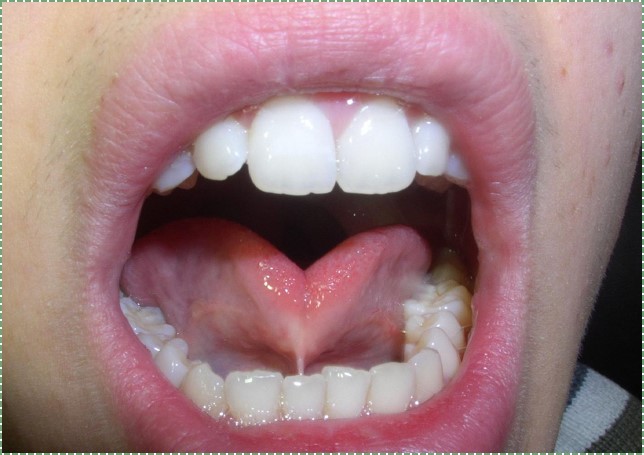Tongue Tie, also known as Ankyloglossia, is a condition that affects the movement of the tongue due to an unusually short or tight band of tissue connecting the underside of the tongue to the floor of the mouth. This condition can impact individuals at any age but is most commonly identified in infants and young children. Understanding the causes, recognizing the symptoms, and exploring treatment options are essential for managing this condition effectively.

What is Tongue Tie?
Tongue Tie occurs when the lingual frenulum, the small fold of tissue beneath the tongue, restricts the tongue’s ability to move freely. In some cases, the frenulum may be too thick, too short, or attached too close to the tip of the tongue. This restriction can lead to functional challenges, such as difficulty breastfeeding, speaking, or eating.
The severity of Tongue Tie varies from person to person. Some individuals may experience mild limitations in tongue movement, while others may face significant difficulties that require intervention.
Causes of Tongue Tie
The exact cause of Tongue Tie is not fully understood, but research suggests that it may have both genetic and environmental components. Below are some factors that could contribute to the development of this condition:
Genetic Factors
- Family history plays a significant role in the occurrence of Tongue Tie. If one or both parents had Tongue Tie, their children are more likely to develop the condition.
- Certain genetic syndromes, such as Ehlers-Danlos syndrome or oral-facial-digital syndrome, are associated with a higher prevalence of Tongue Tie.
Prenatal Development
- During fetal development, the formation of the tongue and its attachment to the floor of the mouth may not occur as expected, leading to an abnormal frenulum.
- Hormonal influences during pregnancy might also play a role in how tissues develop in the oral cavity.
Environmental Influences
- Some studies suggest that maternal health and nutrition during pregnancy could influence the development of the oral structures in the fetus.
- Exposure to certain medications or toxins during pregnancy might also contribute to the condition.
Symptoms of Tongue Tie
The symptoms of Tongue Tie vary depending on the individual’s age and the severity of the condition. Infants, children, and adults may experience different challenges related to restricted tongue movement.
Symptoms in Infants
- Difficulty latching during breastfeeding, which can lead to poor weight gain and frustration for both the infant and the mother.
- Frequent spitting up or gagging during feeding due to improper tongue positioning.
- Noisy sucking or clicking sounds while feeding.
Symptoms in Children
- Speech difficulties, such as trouble pronouncing certain sounds like “t,” “d,” “z,” “s,” “th,” and “l.”
- Challenges with eating solid foods, including difficulty chewing or swallowing.
- Gaps between the lower front teeth caused by the tension of the frenulum.
Symptoms in Adults
- Persistent speech impediments that were not addressed during childhood.
- Discomfort or pain during activities that involve tongue movement, such as kissing or playing wind instruments.
- Oral hygiene issues, as limited tongue mobility can make it difficult to clean food particles from the teeth and gums.
Diagnosing Tongue Tie
Diagnosing Tongue Tie typically involves a physical examination of the mouth and tongue. Healthcare providers assess the appearance and function of the tongue to determine if there is a restriction in movement. The following steps are often part of the diagnostic process:
Visual Examination
A healthcare provider will examine the underside of the tongue to evaluate the length, thickness, and attachment point of the frenulum. They may gently lift the tongue to observe its range of motion.
Functional Assessment
In addition to visual inspection, the provider may ask the patient to perform specific tongue movements, such as sticking out the tongue, touching the roof of the mouth, or moving the tongue side to side. These tests help determine how the condition affects daily activities.
Consultation with Specialists
In some cases, additional consultations with specialists, such as lactation consultants for infants or speech therapists for older children and adults, may be necessary to fully understand the impact of Tongue Tie.
Treatment Options for Tongue Tie
The treatment for Tongue Tie depends on the severity of the condition and the specific challenges it causes. Not all cases require intervention, but when treatment is necessary, several options are available.
Non-Surgical Approaches
For mild cases of Tongue Tie, non-surgical methods may be sufficient to address the issue:
- Lactation Support: For infants struggling with breastfeeding, working with a lactation consultant can help improve feeding techniques and reduce discomfort for both the baby and the mother.
- Speech Therapy: Children and adults with speech difficulties can benefit from speech therapy exercises designed to improve tongue strength and coordination.
- Myofunctional Therapy: This specialized form of therapy focuses on strengthening the muscles of the mouth and improving tongue posture and function.
Surgical Procedures
When non-surgical approaches are insufficient, surgical procedures may be recommended:
- Frenotomy: A simple and minimally invasive procedure where the frenulum is snipped using sterile scissors or a laser. This is often performed in infants and requires minimal recovery time.
- Frenuloplasty: A more extensive surgical procedure used for older children and adults with thicker or more complex frenulums. It may involve stitches and a longer recovery period.
- Laser Surgery: Advanced laser technology can be used to release the frenulum with precision, reducing bleeding and promoting faster healing.
Post-Treatment Care
After undergoing a surgical procedure, patients may need to follow specific care instructions to ensure proper healing:
- Infants may require gentle stretching exercises to prevent the frenulum from reattaching.
- Older children and adults may need to continue speech or myofunctional therapy to maximize the benefits of the procedure.
- Pain management strategies, such as using over-the-counter pain relievers or applying cold compresses, may be recommended.
Long-Term Considerations
While many individuals experience significant improvement after treatment, long-term monitoring may be necessary to address any residual effects of Tongue Tie. Regular follow-ups with healthcare providers can help ensure that the condition does not interfere with future development or quality of life.
Impact on Breastfeeding
For infants who undergo treatment, improvements in breastfeeding are often observed within days. Mothers may notice reduced nipple pain and better milk transfer during feeding sessions.
Speech and Language Development
Children who receive timely intervention typically show progress in their speech and language skills. However, ongoing support from speech therapists may be needed to address lingering articulation challenges.
Oral Health and Hygiene
Individuals with corrected Tongue Tie often find it easier to maintain good oral hygiene. Improved tongue mobility allows for better cleaning of the teeth and gums, reducing the risk of cavities and gum disease.




